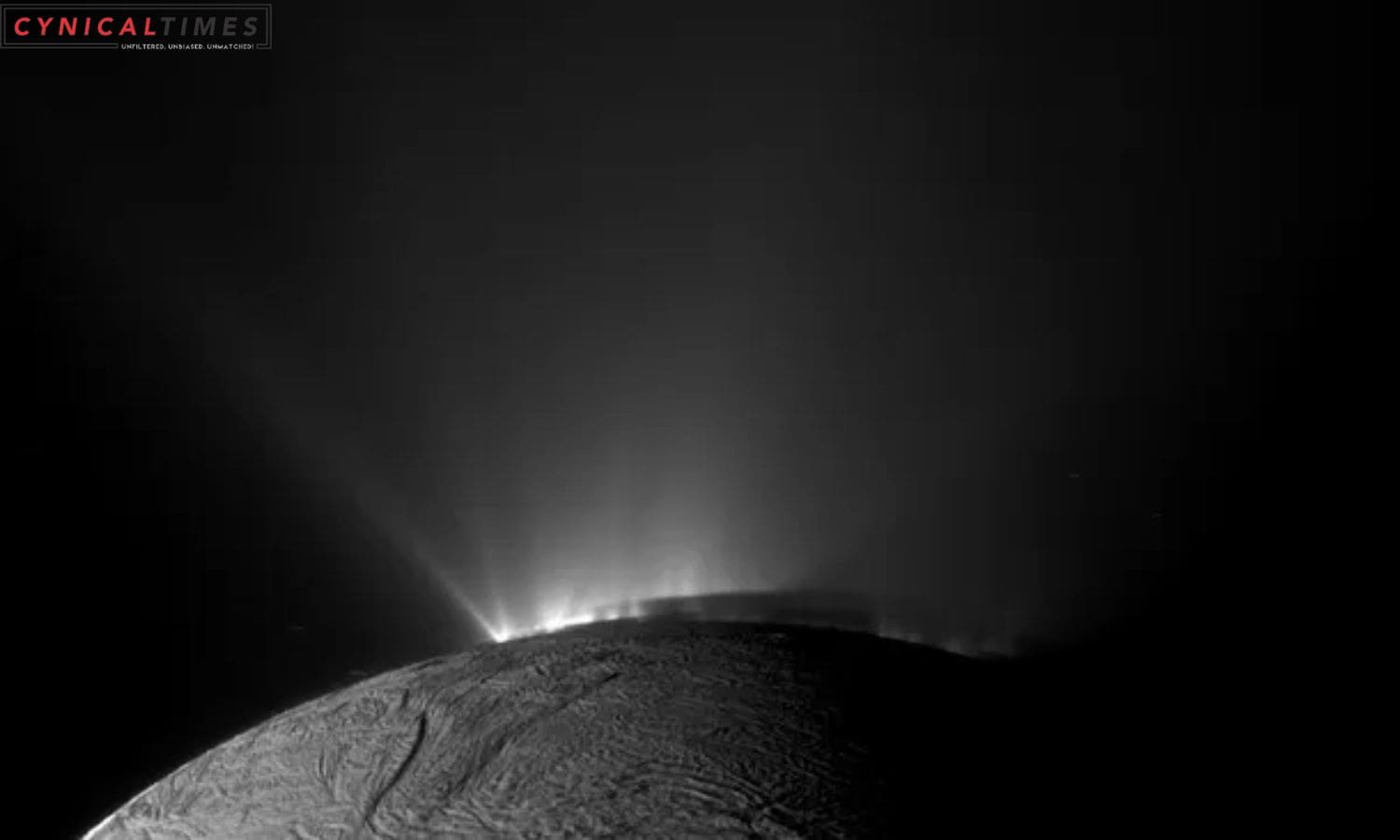Enceladus Unleashed NASA Cassini: Six years after NASA’s Cassini mission concluded, a fresh examination of its data unveils a captivating revelation about Saturn’s icy moon Enceladus. The spacecraft detected a vital life ingredient, sparking excitement about potential lifeforms beneath the moon’s icy exterior.
Enceladus erupts with plumes of ice and water, and scientists long suspected organic molecules, possibly conducive to life, were present. In 2017, carbon dioxide, methane, and hydrogen were found, hinting at methanogenesisa metabolic process suggesting the possibility of extraterrestrial life.
The recent confirmation of hydrogen cyanide, a critical precursor for life’s molecules on Earth, elevates the prospect of Enceladus being habitable. The subsurface ocean, the origin of the plumes, may harbor more organic compounds than previously thought, potentially serving as fuel for life.
Lead author Jonah Peter of Harvard University remarked, “Enceladus meets the prerequisites for habitability, and we glimpse how complex biomolecules could form, offering insight into potential chemical pathways.”
Describing hydrogen cyanide as the “Swiss Army Knife of amino acids,” the research team underscores its versatility in constructing essential building blocks for life. Peter added, “The discovery is exciting as it’s the starting point for theories on life’s origin.”
This newfound chemical energy surpasses methanogenesis, suggesting diverse pathways for potential organisms in Enceladus’s subsurface ocean. Kevin Hand from NASA’s JPL likened methanogenesis to a watch battery and suggested Enceladus might offer a powerful car battery for potential life.
Statistical analysis fortified these findings, enabling scientists to explore potential chemical pathways for life in Enceladus. Despite Cassini’s 2017 plunge into Saturn, its legacy endures, continually providing insights into Saturn and its enigmatic moons.
“While Cassini’s mission concluded, its observations persistently unveil new revelations about Saturn and its captivating moons, including the mysterious Enceladus,” affirmed Cassini team member Tom Nordheim of JPL.
Also Read: Stellar Odyssey S0 6 Cosmic Wanderlust Beyond the Milky Way
Our Reader’s Queries
How close did Cassini get to Enceladus?
At a speed of 19,000 miles per hour (31,000 kph), Cassini made a daring dive within 30 miles (45 km) of Enceladus’ surface. During this maneuver, the spacecraft collected samples of the gases present in the plume. This close encounter provided valuable insights into the composition of Enceladus’ atmosphere.
What happened to NASA’s Cassini?
This was no ordinary encounter. Cassini bravely dove into the planet’s atmosphere, transmitting valuable scientific data until its thrusters could no longer keep its antenna aimed at Earth. Ultimately, Cassini met its fiery demise, burning up and disintegrating like a meteor.
Is NASA sending a mission to Enceladus?
Breakthrough Initiatives, founded by Yuri Milner, is proposing a privately funded astrobiology mission called Breakthrough Enceladus. The mission’s primary objective is to investigate the potential for life on Enceladus, one of Saturn’s moons. NASA will be lending their expertise by providing feedback and expert reviewers to ensure the mission’s design is sound.
Where did Cassini-Huygens go?
In July 2004, the spacecraft successfully arrived at Saturn. Later in December of the same year, the Huygens probe was launched on a 22-day journey to Titan. After reaching the surface of Titan on 14 January 2005, Huygens conducted scientific research. Cassini continued to conduct scientific research from orbit around Saturn until its final descent into the planet’s atmosphere on 15 September 2017.

